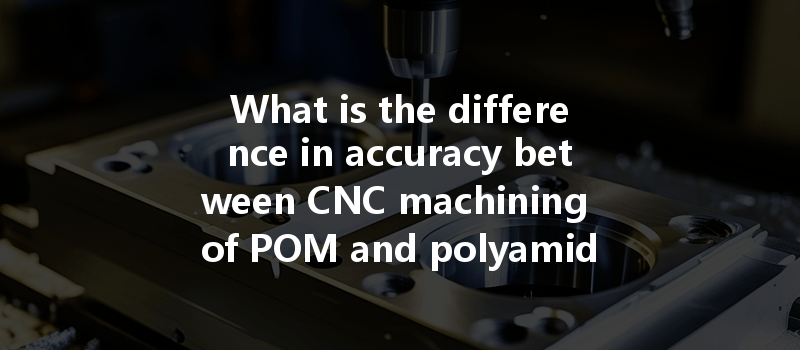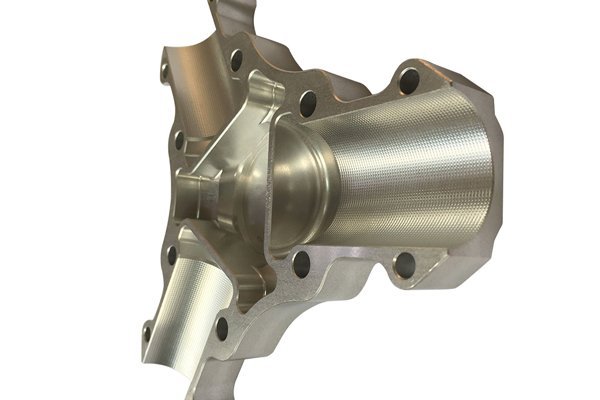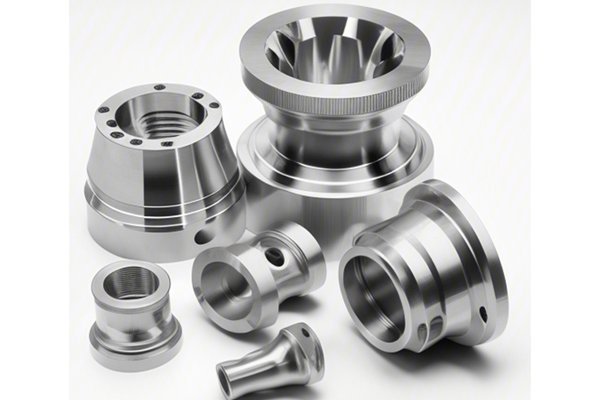**
Did you know that CNC (Computer Numerical Control) machining has revolutionized manufacturing, allowing for extraordinarily precise and repeatable processes that cater to a myriad of materials? Among these, thermoplastics like POM (Polyoxymethylene) and PA (Polyamide) are two highly regarded options in various applications, ranging from automotive parts to cutting-edge aerospace components.
You might be asking yourself: What makes these materials unique in the realm of CNC machining, and how do their machining accuracies differ? In this blog, we will delve deeply into the intricacies of CNC machining, focusing on the differences in accuracy between machining POM and PA materials. By the end, you’ll have a comprehensive understanding of each material’s properties, processing techniques, and the implications of accuracy in your manufacturing projects.
Chapter 1: The Basics of CNC Machining
1.1 What is CNC Machining?
CNC machining is a process that utilizes computer-controlled machinery to remove material from a solid block to create precise parts. It is widely utilized in various industries due to its ability to produce complex shapes and maintain tight tolerances.
1.2 Importance of Material Selection in CNC Machining
Choosing the right material is crucial, as it affects not only the performance and durability of the final product but also the machining process. Different materials have varying machinability, thermal properties, and behavior under mechanical stress.
Chapter 2: Overview of POM and Polyamide (PA)
2.1 Properties of POM
POM, also known as acetal or polyacetal, is renowned for its high mechanical strength, stiffness, and low friction. It has excellent wear resistance, making it suitable for applications involving moving parts. POM is also resistant to solvents and hydrocarbons but is sensitive to UV light.
2.2 Properties of Polyamide (PA)
Polyamide, commonly referred to as nylon, is celebrated for its toughness and flexibility. It exhibits excellent chemical and thermal resistance and is suitable for applications where impact strength is essential. However, PA tends to absorb moisture, which can affect dimensional stability over time.
Chapter 3: Comparison of Accuracy in CNC Machining of POM and PA
3.1 Factors Affecting Machining Accuracy
The accuracy of CNC machining is influenced by various factors, including:
3.2 Accuracy of POM in CNC Machining
POM has a good machinability rating, enabling high accuracy. When machined correctly, POM can achieve tolerances of ±0.05 mm, making it an excellent choice for precision applications. The low thermal expansion of POM contributes to its stability during machining, supporting the maintenance of tight tolerances.

3.3 Accuracy of PA in CNC Machining
While PA offers impressive performance, it comes with some challenges. The moisture absorption leads to potential dimensional changes post-machining. Typically, the achievable tolerances when machining PA are around ±0.1 mm, influenced by the material’s overall toughness and resilience.
Chapter 4: Machining Techniques for Enhanced Accuracy
4.1 Tooling Considerations
Using high-quality tools tailored for each material is essential. For POM, tools should be sharp and chip-resistant to minimize burrs and heat generation, which can compromise accuracy. For PA, tools may require additional coating to prevent friction and heat buildup impacting precision.
4.2 Machining Parameters
Choosing the correct cutting speed and feed rate is critical. For POM, higher speeds and lower feed rates yield better finishes and improved accuracy. Conversely, PA requires a slower speed to accommodate its tendency to gum up the cutting tools and affect dimensional stability.
Chapter 5: Mitigating Common Challenges in CNC Machining
5.1 Warping and Distortion
Both materials can experience warping during and after machining, particularly PA due to moisture absorption. Techniques such as pre-drying PA before machining and controlling humidity in the workspace can alleviate these issues.
5.2 Surface Finish Quality
Achieving a superior surface finish can impact the accuracy of the final part. For POM, a polished finish can reduce the coefficient of friction, while PA may need post-processing treatments to enhance its surface quality.
Chapter 6: Practical Applications and Case Studies
6.1 POM in Housing Components
Many industries are utilizing POM for components such as gears and housings, where precision and durability are paramount. We will analyze several case studies that demonstrate the effectiveness of CNC machined POM parts.
6.2 PA in Aerospace Applications
Polyamide is often found in aerospace applications where impact resistance and low weight are critical. We’ll look at several instances where the strengths and challenges of machining PA are highlighted.
In conclusion, understanding the differences in accuracy between CNC machining of POM and polyamide (PA) materials is essential for anyone involved in manufacturing and design. POM offers excellent accuracy due to its low thermal expansion and high machinability, making it ideal for precision applications. On the other hand, while PA presents challenges with moisture absorption, it still holds significant advantages in toughness and flexibility.
As you navigate your CNC machining projects, recognizing the unique qualities of these materials will help you choose the right one for your specific applications. This knowledge can lead to improved manufacturing processes, enhanced product durability, and ultimately, greater customer satisfaction.
Thank you for investing your time in understanding this vital topic in modern manufacturing. Keep this information at the forefront of your decision-making as you embark on future projects involving CNC machining. Remember, the right choice of material not only impacts the accuracy but also dictates the success of your products in the competitive market.






